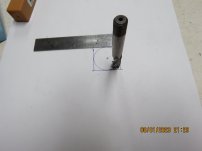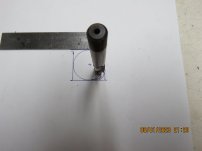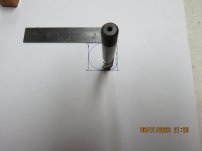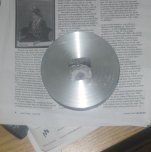Jim Christie
Titanium
- Joined
- Mar 14, 2007
- Location
- L'Orignal, Ontario Canada
I like the idea of drilling the corners first as well
I had been going to suggest drilling down with a 4 flute center cutting end mill but using a drill first would make it easier to follow with an end mill of the proper diameter for the radius.
Sometimes raising the endmill out and stepping over then cutting down with the end of the endmill a few thousandths away from the finished wall a few times a bit like chain drilling sometimes can take most of the side pressure off the endmill to remove the bulk of the material.
Experimenting with some scrap pieces where you have very little to loose except maybe a small broken end mill will boost your confidence when it comes to the real thing.
P.S. some times I have to kind of mock things up to see for my self what it looks like .
I think there won't be much room for you to drill the corner and still have material all around the drill to keep it from walking
if you cut down from the top using the end teeth of the endmill in the correct location for the corner radius and then a couple of other steps on either side of it you shouldn't have too much material to come off to finish the sides
I had been going to suggest drilling down with a 4 flute center cutting end mill but using a drill first would make it easier to follow with an end mill of the proper diameter for the radius.
Sometimes raising the endmill out and stepping over then cutting down with the end of the endmill a few thousandths away from the finished wall a few times a bit like chain drilling sometimes can take most of the side pressure off the endmill to remove the bulk of the material.
Experimenting with some scrap pieces where you have very little to loose except maybe a small broken end mill will boost your confidence when it comes to the real thing.
P.S. some times I have to kind of mock things up to see for my self what it looks like .
I think there won't be much room for you to drill the corner and still have material all around the drill to keep it from walking
if you cut down from the top using the end teeth of the endmill in the correct location for the corner radius and then a couple of other steps on either side of it you shouldn't have too much material to come off to finish the sides
Attachments
Last edited:






